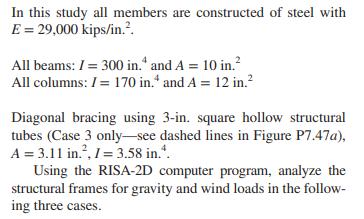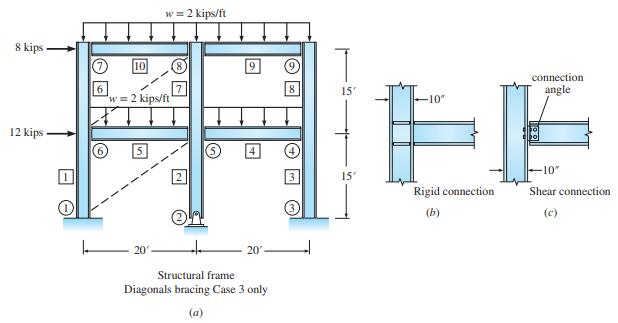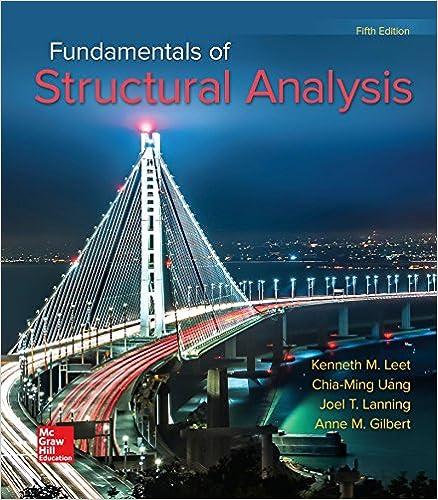Computer study of the behavior of multistory building frames. The object of this study is to examine
Question:
Computer study of the behavior of multistory building frames. The object of this study is to examine the behavior of building frames fabricated with two common types of connections. When open interior spaces and future flexibility of use are prime considerations, building frames can be constructed with rigid connections usually fabricated by welding. Rigid joints (see Figure P7.47b) are expensive to fabricate and now cost in the range of $700 to $850 depending on the size of members. Since the ability of a welded frame to resist lateral loads depends on the bending stiffness of the beams and columns, heavy members may be required when lateral loads are large or when lateral deflections must be limited. Alternately, frames can be constructed less expensively by connecting the webs of beams to columns by angles or plates, called shear connections, which currently cost about $80 each (Figure P7.47c). Also see Photo 5.1 for the rigid and shear connections. If shear connections are used, diagonal bracing, which forms a deep vertical truss with the attached columns and floor beams, is typically required to provide lateral stability (unless floors can be connected to stiff shear walls constructed of reinforced masonry or concrete).
Properties of Members

Case 1 Unbraced Frame with Rigid Connections
(a) Analyze the frame for the loads shown in Figure P7.47a. Determine the forces and displacements at 7 sections along the axis of each member. Use the computer program to plot shear and moment diagrams.
(b) Determine if the relative lateral displacement between adjacent floors exceeds 3 /8 in.—a limit specified to prevent cracking of the exterior façade.
(c) Using the computer program, plot the deflected shape of the frame.
(d) Note the difference between the magnitudes of the vertical and lateral displacements of joints 4 and 9. What are your conclusions? Case 2 Unbraced Frame with Shear Connections (a) Repeat steps a, b, and c in Case 1, assuming that the shear connections act as hinges, that is, can transmit shear and axial load, but no moments. (b) What do you conclude about the unbraced frame’s resistance to lateral displacements? Case 3 Braced Frame with Shear Connections As in case 2, all beams are connected to columns with shear connectors, but diagonal bracing is added to form a vertical truss with floor beams and columns (see dashed lines in Figure P7.47a). (a) Repeat steps a, b, and c in Case 1. (b) Compute the lateral deflections of the frame if the area and moment of inertia of the diagonal members are doubled. Compare results to the original lighter bracing in (a) to establish the effectiveness of heavier bracing. (c) Make up a table comparing lateral displacements of joints 4 and 9 for the three cases. Discuss briefly the results of this study.

Step by Step Answer:

Fundamentals Of Structural Analysis
ISBN: 9780073398006
5th Edition
Authors: Kenneth Leet, Chia-Ming Uang, Joel Lanning




